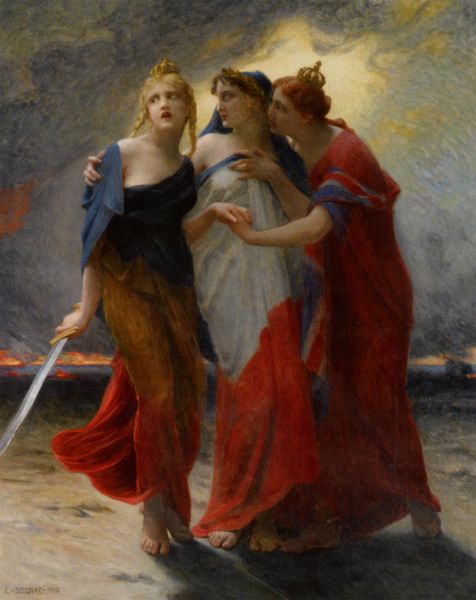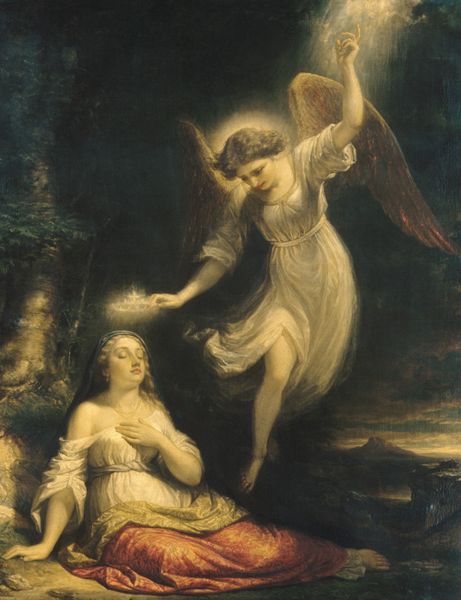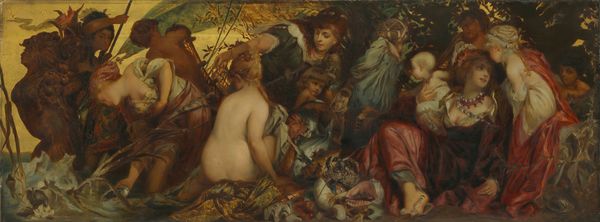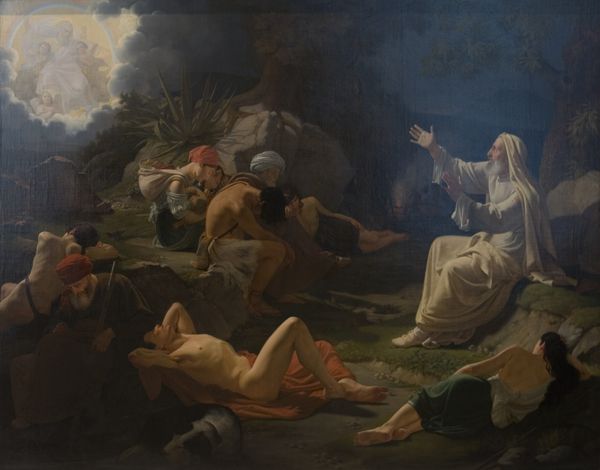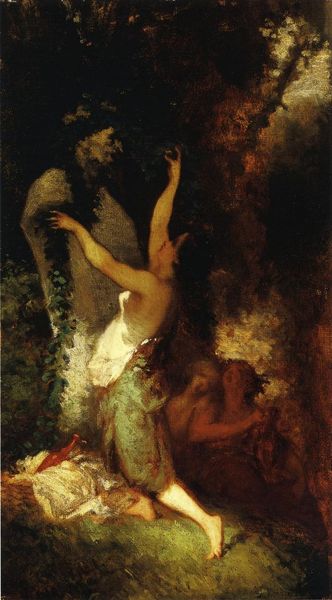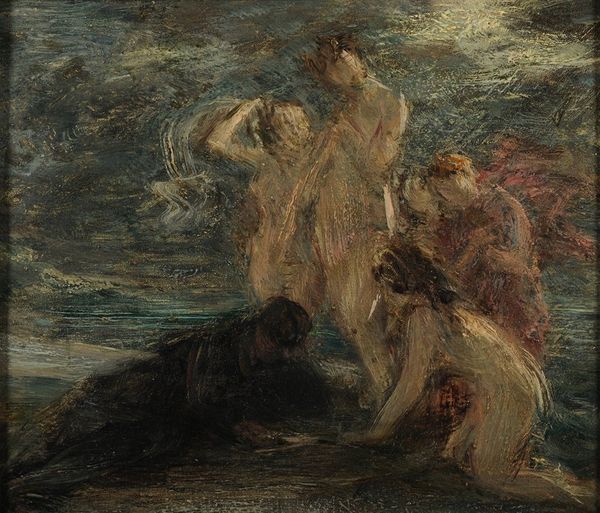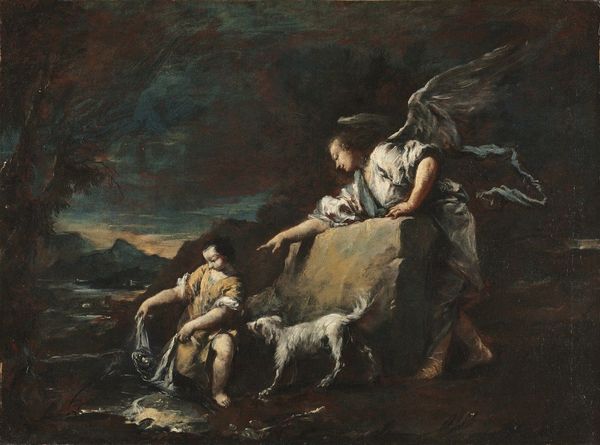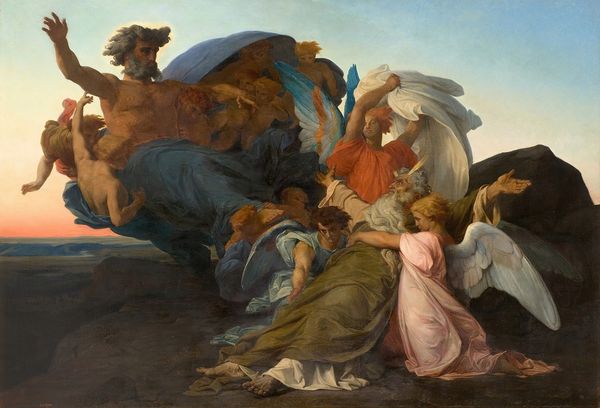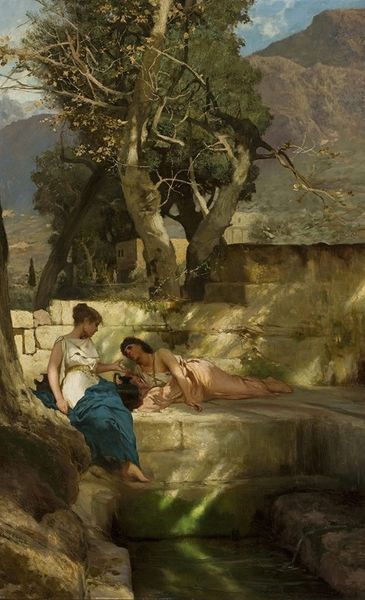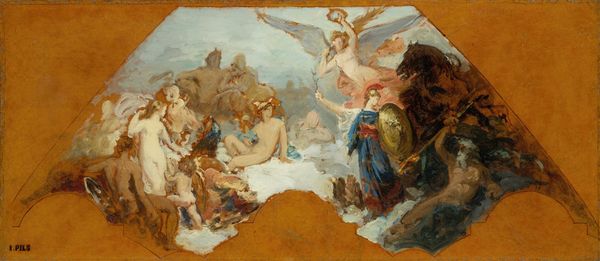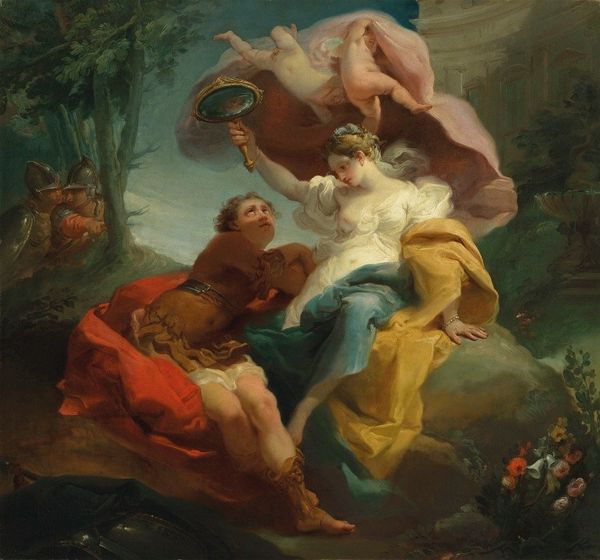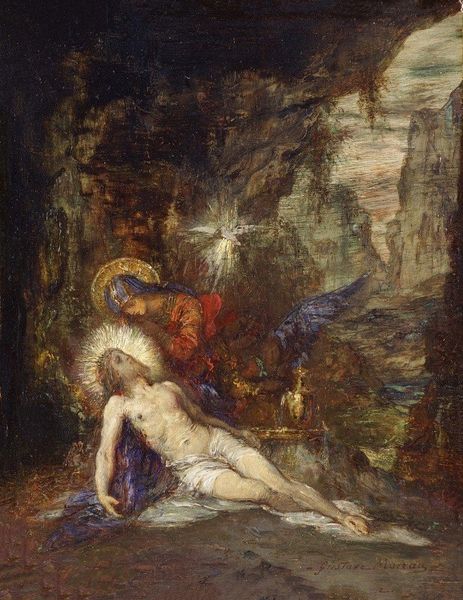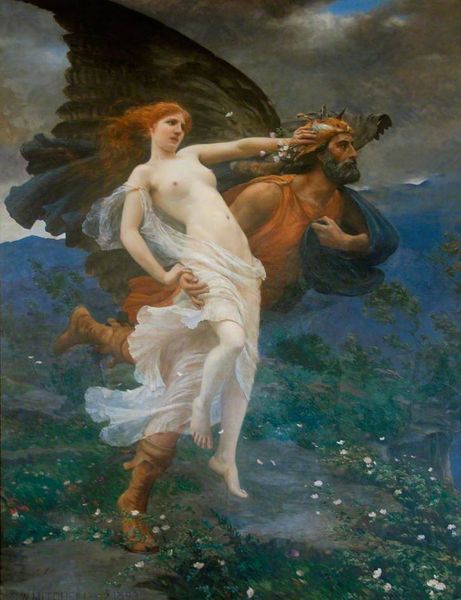
Copyright: Public domain
Editor: Here we have Jules Bastien-Lepage's "The Annunciation to the Shepherds," painted in 1875 using oil paint. I'm immediately struck by the contrast between the ethereal angel and the very earthy, almost grubby shepherds. It’s a fascinating juxtaposition. How do you interpret this work, especially regarding its social commentary? Curator: Precisely. Bastien-Lepage doesn't present a sanitized, idealized religious scene. He roots it in the real, gritty world of rural labourers. Consider the Romanticism movement occurring at this time that aimed to present genuine emotional subjects to the audience. What might that choice suggest about his perspective on class and spirituality, don’t you think? Editor: I hadn't really considered that before! The grittiness… It’s like he’s deliberately avoiding romanticizing poverty. Is he maybe critiquing the church or other societal structures for not adequately addressing the needs of the poor? Curator: Absolutely. He highlights the raw realities of peasant life. The angel appears not to the wealthy or powerful but to the marginalized. Perhaps Bastien-Lepage invites us to contemplate who is truly worthy of divine attention and why. Does the angel's androgynous depiction play into any power dynamics at play in this work? Editor: That's so interesting. Thinking about the androgyny – it feels almost like the divine is disrupting traditional gender roles too. Maybe it speaks to the idea that spiritual experiences transcend societal expectations. Curator: Indeed. By subverting these norms, Bastien-Lepage is pushing for a more inclusive and empathetic understanding of faith. What appears on the canvas is less about passive piety and more about a revolutionary moment of divine intervention into everyday oppression. Editor: This has really opened my eyes. I see the painting as a much stronger statement on social justice and equality now. Curator: Excellent. It's about excavating the layers of meaning and uncovering art’s potential as an agent of social change. The visual and art practices reflect and shape perceptions about identity, encouraging continuous conversation and critical engagements with contemporary society.
Comments
No comments
Be the first to comment and join the conversation on the ultimate creative platform.
